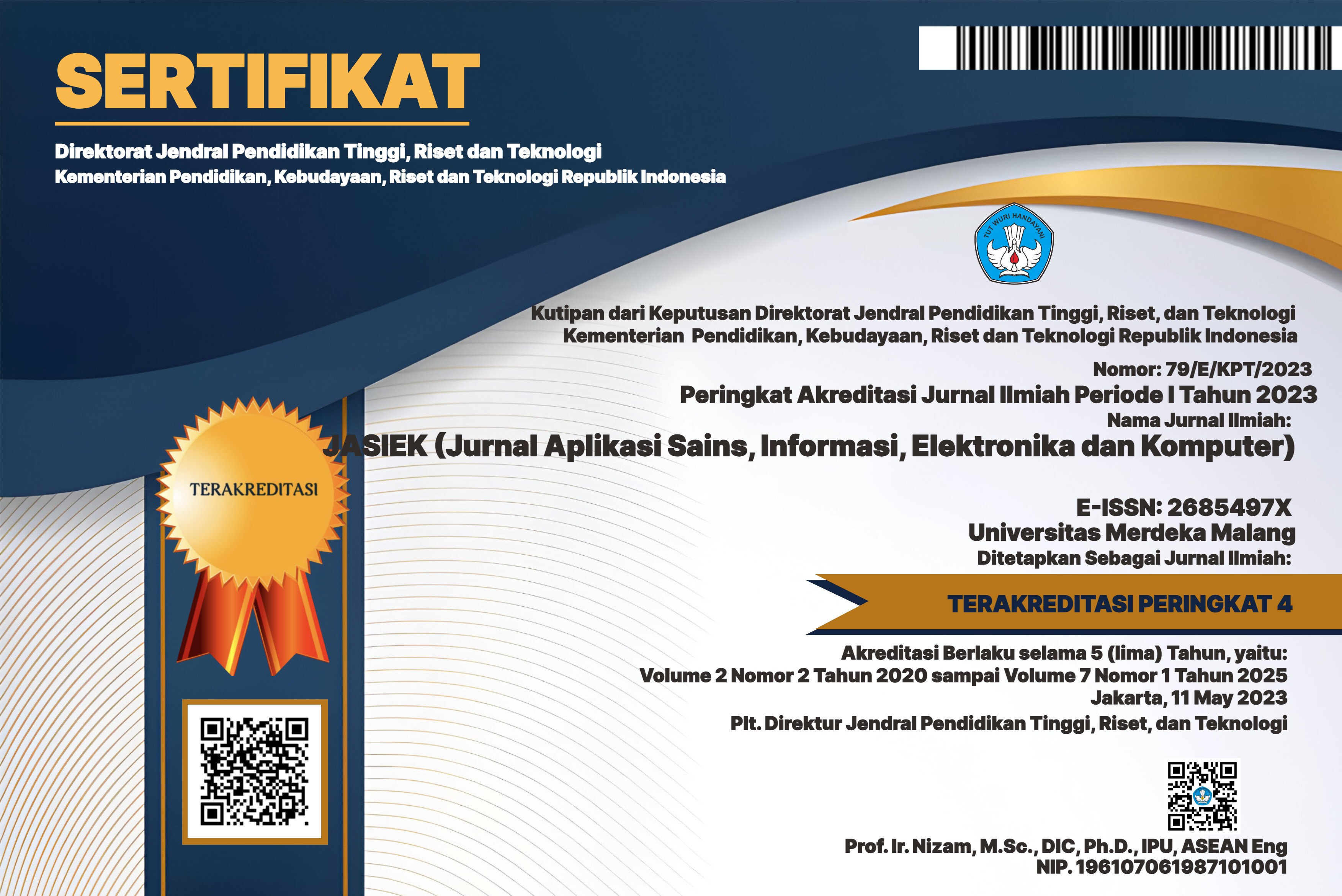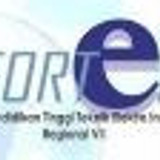Rancang Bangun Alat Ukur Kualitas Air pada Penampungan Air Hujan dengan Sensor TDS Berbasis Mikrokontroller ESP8266
DOI:
https://doi.org/10.26905/jasiek.v5i1.10015Keywords:
Water Quality, Internet of Things, TDS Sensor, ESP8266 MicrocontrollerAbstract
Water quality that is not good can be a disease. Especially diseases related to digestion. Cause of poor water quality can be seen from where the water is obtained. Therefore, this research is expected to help the community to overcome this. Water quality measuring instrument with the implementation of a Total Dissolve Solid (TDS) sensor based on the ESP8266. Purposed research uses Internet of Things (IoT) media to read TDS values and uses Blynk app as a remote control of the device. This study used 3 water samples as a comparison of TDS values, rainwater, ready-to-drink water, and PDAM tap water.Downloads
References
M. Sari and M. Huljana, “Analisis bau, warna, TDS, pH, dan salinitas air sumur gali di tempat pembuangan akhir,†ALKIMIA: Jurnal Ilmu Kimia Dan Terapan, vol. 3, no. 1, pp.1–5, 2019.
I. M. Z. Afidin and K. Kholidah, “ANALISIS KANDUNGAN NITRAT DAN NITRIT SERTATOTAL BAKTERI COLIFORM PADA AIR SUNGAI DI PT. SUCOFINDO SEMARANG,†Jurnal Inovasi Teknik Kimia, vol. 6, no. 1, 2021.
H. Ehrlich, “Chitin of poriferan origin as a unique biological material,†Blue biotechnology: production and use of marine molecules, vol. 2, pp. 821–854, 2018.
R. Roslan, F. P. I. Damalia, and Y. A. Mirasa, “TEKNOLOGI TEPAT GUNA PORTABLE CHLORINATOR PADA SISTEM PENYEDIAAN AIR KOMUNAL PEDESAAN,†IKESMA, vol. 18, no. 1, pp. 29–35, 2022.
E. M. Moko, D. Rahardiyan, and F. Wantouw, “Penerapan Teknologi Filtrasi dan Tower Penampungan Low Cost-Low Maintenance dalam Penyediaan Air Bersih Bagi Masyarakat Desa Bango Kepulauan Mantehage,†VIVABIO: Jurnal Pengabdian Multidisiplin, vol. 2, no. 2, pp. 20–25, 2020.
W. H. Organization, “Manganese in drinking water: background document for development of WHO guidelines for drinking-water quality,†World Health Organization, 2021.
L. A. Melnik and D. A. Krysenko, “Ultrapure water: properties, production, and use,†Journal of Water Chemistry and Technology, vol.41, pp. 143–150, 2019.
A. P. Dewi and P. Gusnita, “Analisa Cemaran Mikroba Pada Es Batu yang Dijual di Sekitar Universitas Abdurrab Dengan Metode Most Probable Number (MPN),†Jurnal Farmasi Higea, vol. 11, no. 2, pp. 154–158, 2019.
S. Yudo and N. I. Said, “Kondisi kualitas air Sungai Surabaya studi kasus: peningkatan kualitas air baku PDAM Surabaya,†Jurnal Teknologi Lingkungan, vol. 20, no. 1, pp. 19–28, 2019.
R. Rimbawati, C. Cholish, W. A. L. Tanjung, and M. A. R. Effendy, “Pengujian Air Bersih Menjadi Hidrogen Untuk Energi Alternatif Dengan Menggunakan Arduino,†CIRCUIT: Jurnal Ilmiah Pendidikan Teknik Elektro, vol. 5, no. 1, pp. 65–74, 2021.
F. I. Purnianto, “Perancangan Sistem Instrumentasi Pada Sistem Monitoring Kualitas Air Berbasis Hybrid Control Dengan Panel Surya,†Setrum: Sistem Kendali-Tenagaelektronika-telekomunikasi-komputer, vol.9,no.2,2020.
Downloads
Published
Issue
Section
License
Authors who publish with this journal agree to the following terms:
The journal allow the authors to hold the copyright without restrictions and allow the authors to retain publishing rights without restrictions.
Authors retain copyright and grant the journal right of first publication with the work simultaneously licensed under a Creative Commons Attribution-ShareAlike 4.0 International License that allows others to share the work with an acknowledgement of the work's authorship and initial publication in this journal.
Authors are able to enter into separate, additional contractual arrangements for the non-exclusive distribution of the journal's published version of the work (e.g., post it to an institutional repository or publish it in a book), with an acknowledgement of its initial publication in this journal.
Authors are permitted and encouraged to post their work online (e.g., in institutional repositories or on their website) prior to and during the submission process, as it can lead to productive exchanges, as well as earlier and greater citation of published work (See The Effect of Open Access).

This work is licensed under a Creative Commons Attribution-ShareAlike 4.0 International License.










